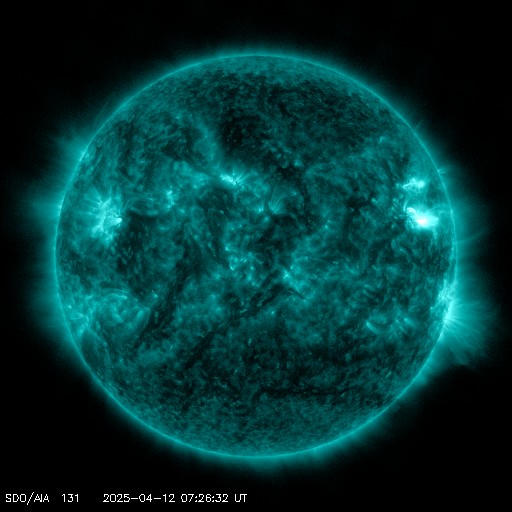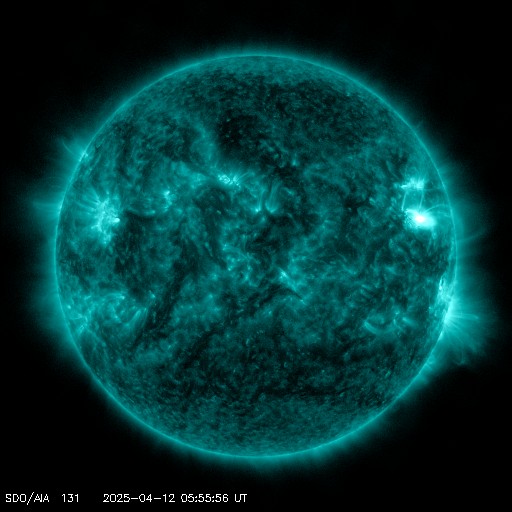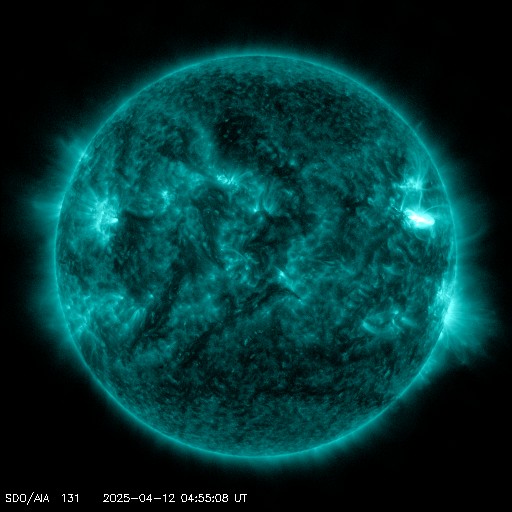Viewing archive of Wednesday, 29 November 2000
Solar activity report
Any mentioned solar flare in this report has a scaling factor applied by the Space Weather Prediction Center (SWPC). Because of the SWPC scaling factor, solar flares are reported as 42% smaller than for the science quality data. The scaling factor has been removed from our archived solar flare data to reflect the true physical units.
Report of Solar-Geophysical Activity 2000 Nov 29 2200 UTCPrepared by the NOAA © SWPC and processed by SpaceWeatherLive.com
Joint USAF/NOAA Report of Solar and Geophysical Activity
SDF Number 334 Issued at 2200Z on 29 Nov 2000IA. Analysis of Solar Active Regions and Activity from 28-2100Z to 29-2100Z
Solar activity was low. The largest flare of the past
day was a C9/Sf at 29/0629 UTC in Region 9246 (S12E33). The flare
was associated with an intensity one Type II radio sweep. This is a
rapidly developing D-type sunspot group that has produced several
C-class subflares. Region 9236 (N19W79) continues its decay as it
approaches the west limb and has not produced significant activity
during the past day. The large bushy filament centered at about
S35W45 erupted sometime between 28/1653 UTC and 29/0649 UTC. No
other associated activity was apparent. New Region 9247 (N13E20) was
numbered.
IB. Solar Activity Forecast
Solar activity is expected to be low
to moderate. An isolated M-class flare is possible in either Region
9242 and 9246.
IIA. Geophysical Activity Summary 28-2100Z to 29-2100Z
The geomagnetic field ranged from unsettled to severe storm levels.
Severe storm conditions were observed at many stations during the
29/0300-0600 UTC period. Solar wind parameters were relatively
benign suggesting that this activity was associated with the
dissipation of energy stored in the geomagnetic field over the past
few days. The greater that 10 MeV proton event ended at 29/0200 UTC
(begin 24/1520 UTC and peak of 942 sfu at 26/2030 UTC).
IIB. Geophysical Activity Forecast
The geomagnetic field is
expected to be unsettled to active. Active to storm periods are
possible at local night time over the next 24 to 48 hours.
III. Event Probabilities 30 Nov to 02 Dec
| Class M | 30% | 30% | 30% |
| Class X | 01% | 01% | 01% |
| Proton | 01% | 01% | 01% |
| PCAF | green | ||
IV. Penticton 10.7 cm Flux
Observed 29 Nov 188 Predicted 30 Nov-02 Dec 185/180/170 90 Day Mean 29 Nov 176
V. Geomagnetic A Indices
Observed Afr/Ap 28 Nov 018/037 Estimated Afr/Ap 29 Nov 040/050 Predicted Afr/Ap 30 Nov-02 Dec 015/025-010/015-010/010
VI. Geomagnetic Activity Probabilities 30 Nov to 02 Dec
| A. Middle Latitudes | |||
|---|---|---|---|
| Active | 25% | 20% | 15% |
| Minor storm | 15% | 10% | 05% |
| Major-severe storm | 10% | 05% | 01% |
| B. High Latitudes | |||
|---|---|---|---|
| Active | 40% | 30% | 20% |
| Minor storm | 30% | 20% | 10% |
| Major-severe storm | 15% | 10% | 05% |
All times in UTC
Current data suggests there is a slight possibility for aurora to appear at the following high latitude regions in the near future
Whitehorse, YT, Yellowknife, NTAnchorage, AK, Fairbanks, AK, Juneau, AK
Latest news
Latest forum messages
AR 4055 37Filaments and prominences 2CME 16Filaments and prominences (old topic) 756Unspecified geomagnetic activity 2239
More topicsSupport SpaceWeatherLive.com!
A lot of people come to SpaceWeatherLive to follow the Sun's activity or if there is aurora to be seen, but with more traffic comes higher server costs. Consider a donation if you enjoy SpaceWeatherLive so we can keep the website online!

Latest alerts
07:39 UTC - Solar flare
Moderate M1.03 flare from sunspot region 4055
07:24 UTC - Radio Blackout
Minor R1 radio blackout in progress (≥M1 - current: M1.03)
06:09 UTC - Solar flare
Moderate M1.27 flare
05:51 UTC - Radio Blackout
Minor R1 radio blackout in progress (≥M1 - current: M1.16)
05:03 UTC - Solar flare
Moderate M1.19 flare
Space weather facts
| Last X-flare | 2025/03/28 | X1.1 |
| Last M-flare | 2025/04/11 | M1.0 |
| Last geomagnetic storm | 2025/04/06 | Kp5 (G1) |
| Spotless days | |
|---|---|
| Last spotless day | 2022/06/08 |
| Monthly mean Sunspot Number | |
|---|---|
| March 2025 | 134.2 -20.4 |
| April 2025 | 139.5 +5.3 |
| Last 30 days | 136.6 -3.5 |





